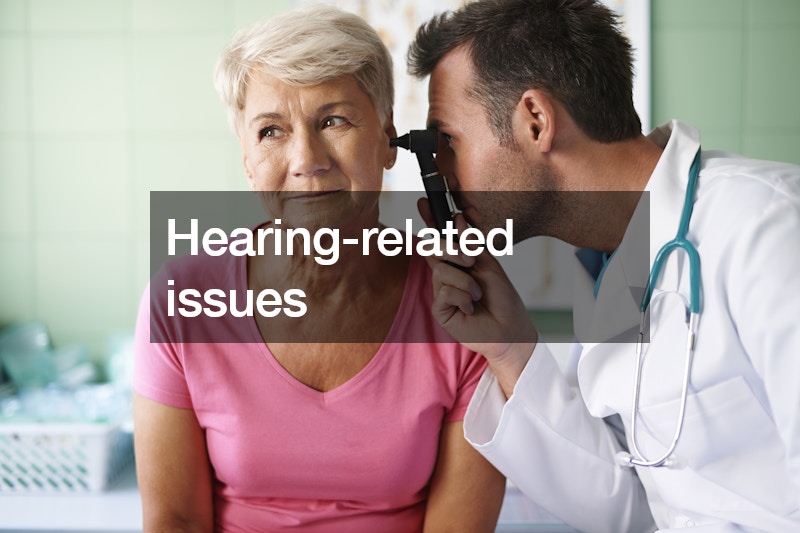
Hearing-related issues should be dealt with promptly as they can have a negative impact on the quality of your child’s life if you ignore them. That’s why you need to look for hearing aids for sale or apply other solutions to this issue so that you can all enjoy your lives as a family. This is an important detail because the impact of hearing loss on family members, while minimal, still exists. It can make it harder to bond and achieve your best as a family, and that’s why you should prioritize finding a solution for it. For a child who goes to school, hearing loss can also lead to complications with education.

The first step before all of these, however, is to talk to a professional. They’re going to carry out tests that can help you understand the full scale of the hearing problem that the affected family member has. On this note, they can tell you whether the child has functional hearing loss, or whether they find it completely impossible to hear. Whatever the case, you can be sure that it will be easier for all of you as a family once the issue is diagnosed and treatment starts.
Being hearing impaired can limit a student’s access to learning. The first step toward getting the help that they need is making sure you understand the three different kinds of hearing loss: conductive, which is in the outer or middle ear; sensorial, which is the inner ear or sensory organ; or combination, which is as defined a combination of conductive and sensorial.

Fortunately, there are many Medicaid benefits that will cover the cost of hearing aides and other important devices.
It is important for educators to understand that as a student’s hearing loss goes from mild to severe, not only is the volume level decreased, but the words also become mushy and difficult to distinguish. By looking at the hearing decibel level charts, it is important to note that the configuration can be in one of three shapes: flat, sloping, or cookie biter. The shaded area on these charts which is referred to as the banana allows a clear visual. Sometimes, with the help of Medicaid benefits and school district resources, students can get the assistive devices that they need. Qualifying for benefits often takes someone who is knowledgeable about the ins and outs of Medicaid benefits. When necessary, legal help may be needed. In fact, legal services can often work with a school district and parents to find the most affordable access to the needed technology. From Medicaid benefits to special education funding, there are many ways to access the assistive hearing technology that is needed to help every student succeed.
Assistive Technology Devices Can Help Children Access Needed Educational Instruction
In addition to understanding the kind of hearing loss, it is also important to know if the hearing loss is unilateral or bilateral. In fact, unilateral when the loss is different in both ears, while bilateral is when the loss is the same in both ears.
Mild to moderate hearing loss sufferers have difficulty hearing the quieter components of speech like the “sh” and “f” sounds. Especially challenging to these students, there hearing loss can look like selective listening and can lead to discipline problems in a classroom. These students can also have a difficult time hearing transitional clues and often experience some fatigue as the expend a lot of energy listening as much as they can. In addition, they can also struggle with socialization at lunch and recess because they cannot hear the information that they need to join in with classmates. Students with profound hearing loss may receive limited information that can keep them from being successful.
Research indicates that unilateral hearing loss and mild hearing loss is especially a problem if the speech is originating from the weaker side it is difficult for the student to find the sound source. For all of these reasons, it is important to know that hearing does not equal understanding. And putting in hearing aides is not the same as putting glasses on someone with vision issues.
Hearing loss is an access issue. In fact, hearing loss is an invisible barrier that causes cumulative learning gaps. One example, is that background knowledge may be limited and these limitations can lead to gaps that are significant. An illustration of a puzzle with only 78% of the pieces in place demonstrates how this picture of text is very difficult to decode.
It is important to also remember that loud enough is not good enough. It is, however, important to remember the listening bubble, an area that amounts to a circle of three meters around the person.
Some of the most difficult problems with hearing loss are with younger children, because they do not have the experience it takes to fill in the gaps. Fortunately, in addition to the personal amplifications, preferential seating is also an asset for most students. And while the temptation may be to set a a student with hearing loss front and center, it is important to make sure that it is better to make sure that preferential seating is in the front row, but to one side. The kind of placement that is near the instructor, but with good visual access to the students as well.
Helping every child learn is the goal of educators across the nation. Hearing devices can help schools achieve this goal.

